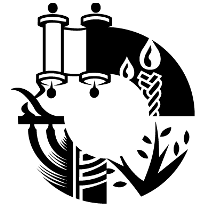Congratulations, you found Clue #7! Rashi and his grandsons wrote long commentaries on the entire Talmud, teaching many generations of Jews who followed them.
מאימתי קורין את שמע בערבין. משעה שהכהנים נכנסים לאכול בתרומתן – כהנים שנטמאו וטבלו והעריב שמשן והגיע עתם לאכול בתרומה:
From what time do we read the shema at night? From the time that the Kohanim (priests) enter to eat their Trumah (holy food). Kohanim that became defiled, and then immersed (in the mikvah), and the sun has set [reseting their purity], then they are allowed to eat Trumah.

This is the first page from the Romm edition of the Talmud, printed in 19th-century Vilna. If you look carefully, you can see that the commentaries written by Rashi and his grandson, shown on either side of the center column (the Talmud itself), are written in a different script, called Rashi script.
However, not every Jew could devote his or her life to studying Jewish law. Many Jews turned to leaders who promised miracles from God in the form of revolution and return to the land of Israel. When this didn't work, many Jews turned to Jewish mystics and preachers who taught how to be good Jews.
Many of these Jewish leaders, followers of a man called the Baal Shem Tov, taught through fantastic stories. They created a movement of religious reform called Hassidism. One of the most famous storytellers was named Rabbi Nachman of Breslov. Read some of the first story in his collection, Sippurei Maasiyot. Then click on the first paragraph to open the resources panel and locate Clue #8.



